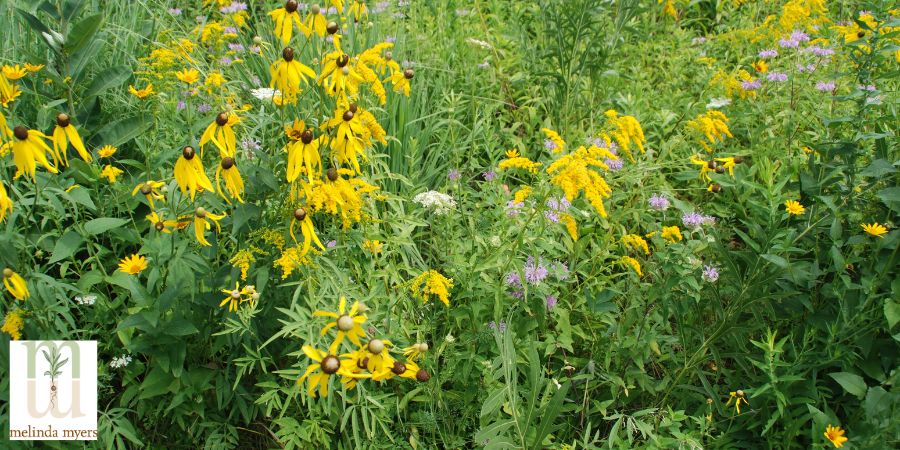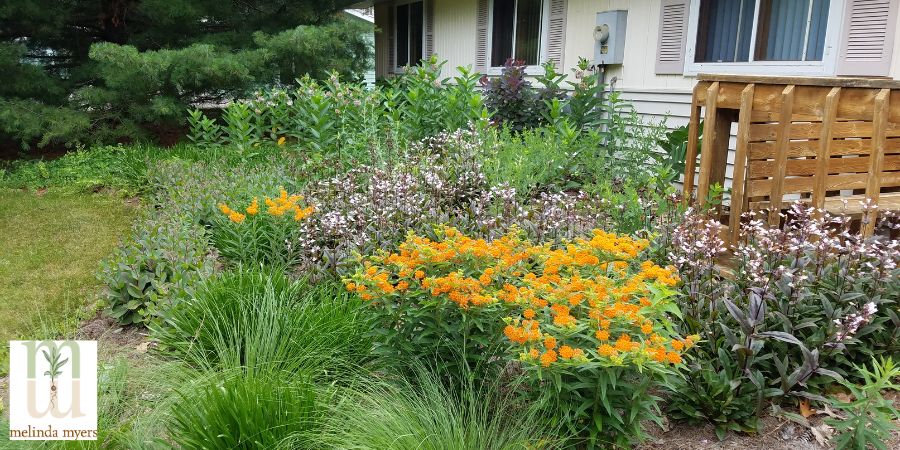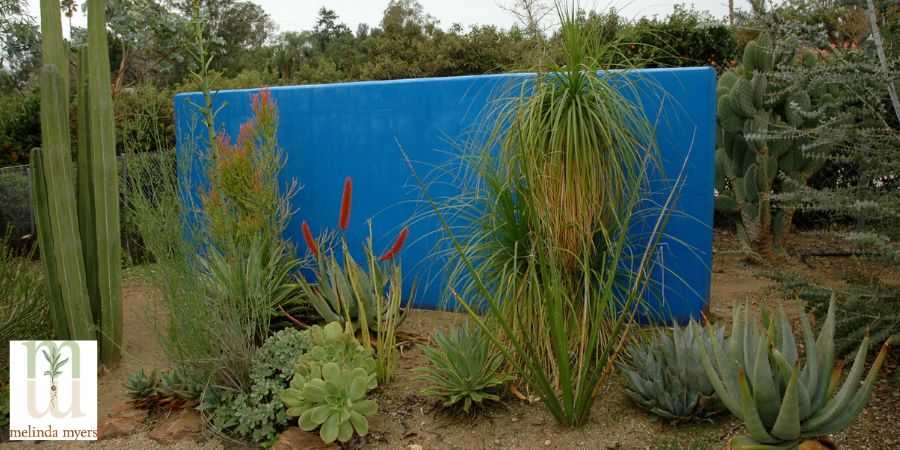Selecting Drought Tolerant Plants
- horticulturist and gardening expertAugust 3, 2024
When you discuss drought with a fellow gardener, the comments are greatly influenced by where they garden. We all look at weather conditions from the local perspective of what is “normal” for our area. As a Northern gardener, when I say we are experiencing a drought, my southern California friends roll their eyes. There are over 150 definitions and four major categories of drought. To keep our discussion focused on drought and the impact on gardens and landscapes, I like the National Geographic’s definition with a slight modification based on other definitions. “A drought is [an extended] period of time, when an area or region experiences below-normal precipitation. The lack of adequate precipitation, either rain or snow, can cause reduced soil moisture or groundwater, diminished stream flow, crop damage, and a general water shortage.”
As gardeners we may be able to irrigate plants during these extended drier than normal periods. But watering bans, cost of water and concern for the environment have many of us looking for ways to conserve water while growing beautiful landscapes.
Designing and Managing a Drought Resistant Landscape
Whenever planning a garden or designing a landscape it is always important to select plants suited to the climate, as well as your design goals. These are plants that thrive not only in the “normal” amount of precipitation but also in the heat, cold, wind, and soil in your location. Changing climate conditions, including record heat, drought, heavy rainfalls, and fluctuating temperatures, make this even more challenging.

Drought-Tolerant Prairie
You will find lots of lists of drought-tolerant plants online. The problem is they are limited and may not apply to your area or garden needs. The United States Environmental Protection Service Water Sense Partnership Program website provides links to plant resources for each state. I always recommend looking to local experts with expertise and experience growing plants in your climate. Start with a visit to your state’s University Extension Service. Most offer lists of plants suited to the growing conditions in your state. Your local botanic garden, is another great source of information and a place to observe how plants perform in your area. Local horticulture consultants and staff at your local independent garden center can also provide insight to growing plants in your area, helping increase your chance of success.
Look for plants listed low maintenance, drought tolerant or water wise as these typically need less frequent watering. Most plant tags, catalogue descriptions and signs in the garden center also talk about the water needs of individual plants.
You may also find information on Low-Water plants for your area. In the article Low-Water vs. Drought Tolerance Karrie Reid explains the difference and why it matters to gardeners. She says drought-tolerant plants are ones that survive even when water is not available. They may go dormant, die back to the ground, and don’t always look great during extended dry periods. These plants may or may not revive once the rains return.
Some gardeners, professionals, and growers have adopted the Water Use Classification when recommending and selecting plants. I like Southern California-based author and gardener Nan Sterman’s explanation of plant water needs in her book California Gardener’s Guide. She shares that Low-Water plants, once established, require about the same or less than the normal precipitation in your garden. This definition considers the differences in growing conditions between places like the SW, Pacific NW, Rocky Mountains, SE, Midwest, and North. A Low-Water Plant in the Midwest requires more water than a Low-Water, arid plant growing in the desert. High-Water Plants are those that require constantly moist, not soggy, soil. Moderate Water plants fall in the middle needing water when the top few inches begin to dry.
Select drought tolerant plants that provide the needed function like shade, seasonal interest, screening and more. Consider adding those that support pollinators and songbirds. You’ll enjoy these visitors, and they’ll appreciate the food and habitat.

Pollinator Garden
Arrange plants based on water needs, hydrozones, as well as aesthetics. Placing plants with similar water needs means you can water more efficiently saving time and using less water. You are also more likely to provide the right amount of water when plants with similar water needs are grouped together.
Before you begin planting, evaluate the soil’s ability to absorb water and move it through the soil for the plant roots to access. Most soils benefit from the addition of organic matter. Incorporating several inches of compost into the top 8 to 12” of soil helps improve absorption and water movement in heavy clay soils and water holding ability in sandy fast draining soil. You may opt to create great gardening soil from landscape trimmings with one of the No Dig methods like lasagna and Hugelkultur gardening.
Those gardening in parts of Arizona, California, Nevada, New Mexico, and Texas may be battling with caliche. This forms when soil particles are cemented together most often by the calcium carbonate in the soil. This layer prevents water from moving through the soil and can limit root growth. Removing or creating holes in the caliche layer can help improve drainage. Adding elemental sulfur to help dissolve the caliche or creating raised beds with additional topsoil brought into your landscape are other options. Do a bit more research before tackling caliche in your landscape.
Caring for Your Drought-Tolerant Garden
All new plantings, even those sold as drought-tolerant, need consistent moisture to become established. Always water plants thoroughly, moistening the root ball and surrounding soil. Once established, continue to water thoroughly but less frequently. The robust root system that develops allows the plant to find and absorb water from a larger area, making it more drought-resistant.
Mulch the soil surface to conserve moisture, moderate soil temperature, suppress weeds, and reduce the risk of erosion. Organic mulches like shredded leaves, evergreen needles, and shredded bark work well for most plants. As these decompose, they help improve the soil adding organic matter and nutrients. Skip placing the weed barrier below the mulch. It can eventually impede water infiltration as the pores fill with fine particles. And as the organic mulches break down, they are unable to reach and improve the soil below. This layer of compost is the perfect growing media for weed seeds that blow in to sprout and grow and the surrounding grass to move in. Both are difficult to remove once they root through the weed barrier.
Use stones, pebbles, or similar inorganic materials for succulents, including cacti. These plants prefer drier, well-drained soils, and organic mulches can create too moist an environment, leading to rot. Select materials that are less than ½” in diameter for the greatest water conservation and weed suppression benefit.

Succulents
Spread a 2 to 4” layer of mulch over the soil surface pulling it away from the trunks of trees, stems of shrubs and crowns of other plants. The finer the mulch material the thinner the layer of mulch that is needed. Just make sure the soil surface is covered.
Fertilize as needed with Milorganite. This low nitrogen slow-release fertilizer promotes balanced above and below ground growth that requires less water than lush succulent growth. It also contains 85% organic matter, so it improves the soil as well as feeds the plants.
Remove weeds as they appear. These unwanted plants compete with your garden plants for water and nutrients. Removing them when small is easier, and you prevent them from setting seed and starting hundreds more in next year’s garden.
Topdressing existing gardens with up to an inch layer of compost every year or two is a great way to improve the soil while leaving permanent plants in place. Pull the mulch aside as needed before spreading the compost. You can leave the compost sitting on the soil surface and let earthworms, ground beetles, and other organisms move it down into the soil and near the plant roots where it is needed. Or lightly mix it into the soil surface with a hand cultivator, being careful not to damage the plant roots.
I like to take it one step further for heavy and compacted soils. Once the compost is in place, use an auger bit on a cordless drill to do a bit of vertical mulching. Simply drill holes into the soil in spaces between plants to help move some of the compost into the soil. The compost fills openings while allowing air, water and fertilizer to penetrate the soil surface and travel to the root zone.
Establishing a healthy soil foundation, selecting plants best suited to the growing conditions, and providing proper care will help you create a waterwise, drought-tolerant landscape.

